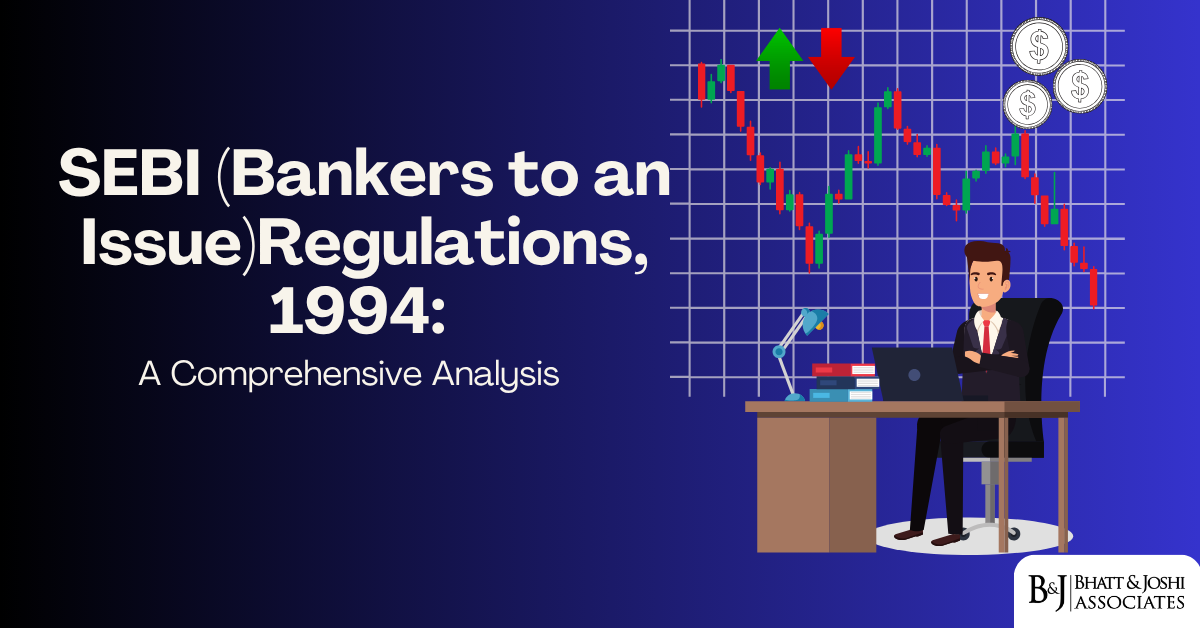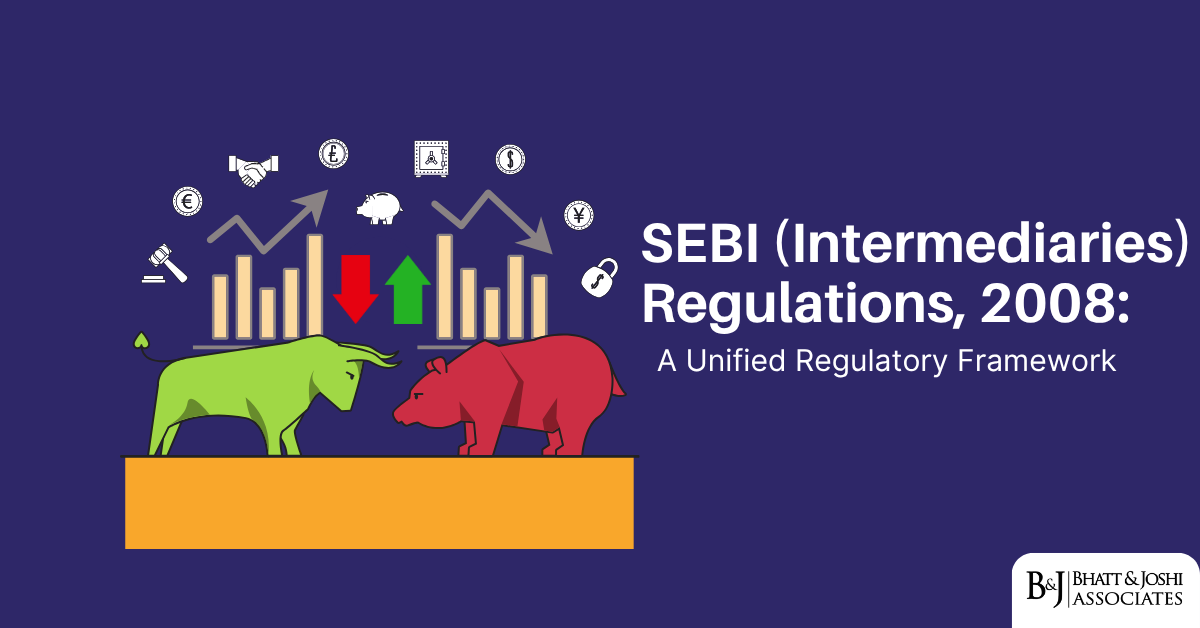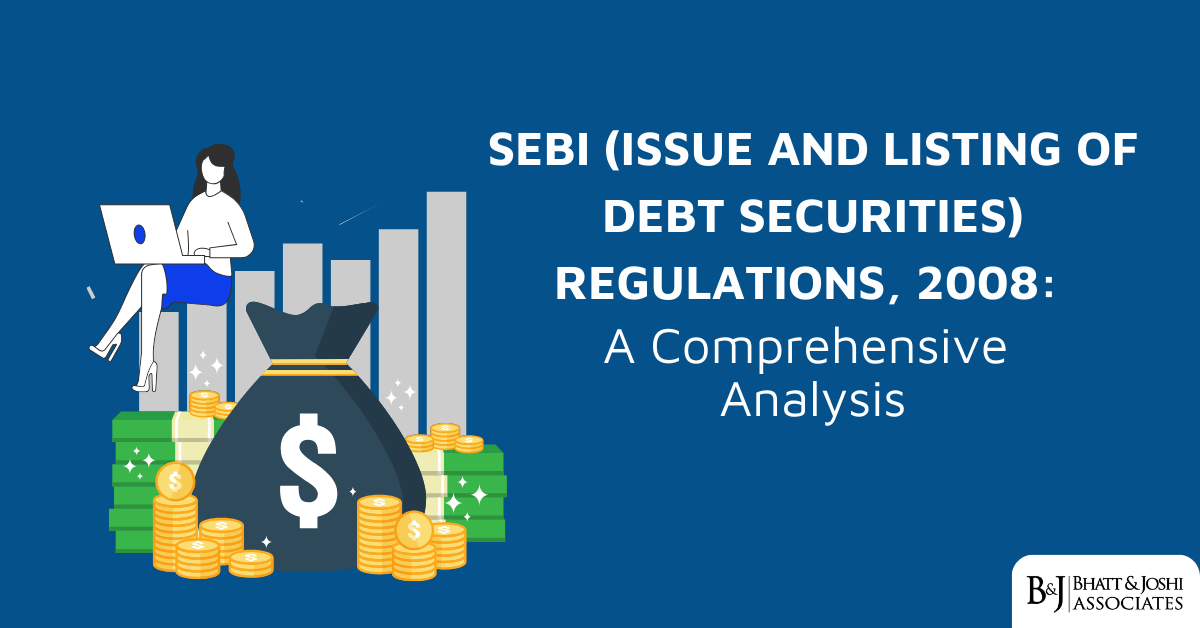Introduction
The Securities and Exchange Board of India (SEBI) enacted the Bankers to an Issue Regulations in 1994 to regulate the activities of banks that serve as collection and refund agents in public offerings of securities. These regulations emerged from SEBI’s recognition that banking institutions play a pivotal role in the capital raising process, handling substantial funds during public issues and serving as a critical interface between issuers and investors. The regulations aim to ensure that these banking functions are performed with integrity, efficiency, and accountability, thereby protecting investor interests and promoting market confidence in the primary market for securities.
Historical Context and Evolution of SEBI (Bankers to an Issue) Regulations
The SEBI (Bankers to an Issue) Regulations were promulgated under Section 30 of the SEBI Act, 1992, which empowers SEBI to make regulations consistent with the Act to carry out its objectives of protecting investor interests and regulating the securities market. Prior to these regulations, banking functions in public issues were governed primarily by Reserve Bank of India (RBI) guidelines and general banking laws, creating a regulatory gap specifically addressing their securities market functions.
The regulations were enacted during a period of significant reform in India’s capital markets, following the 1991 economic liberalization policies. This era witnessed a substantial increase in capital market activity, with numerous companies accessing public markets for fund-raising. The need for specialized regulation of key market intermediaries, including bankers to issues, became apparent as the market expanded and grew more complex.
Over the years, these regulations have evolved to address changing market dynamics and technological advancements. Significant amendments were introduced in 2006, 2011, and 2018, reflecting SEBI’s responsive approach to regulatory challenges and market developments. The most transformative change occurred with the introduction of the Application Supported by Blocked Amount (ASBA) process in 2008, which fundamentally altered the role of bankers to an issue by moving from fund collection to fund blocking mechanisms.
Registration Requirements for Bankers to an Issue under SEBI Regulations
Chapter II: Registration Framework
Chapter II of the SEBI (Bankers to an Issue) Regulations, 1994 lays down the registration framework for such entities.
“No person shall act as a banker to an issue unless he has obtained a certificate of registration from the Board under these regulations:
Provided that a person acting as a banker to an issue immediately before the commencement of these regulations, may continue to do so for a period of three months from such commencement or, if he has made an application for such registration within the said period of three months, till the disposal of such application:
Provided further that a scheduled bank, as defined under the Reserve Bank of India Act, 1934 (2 of 1934), shall not act as a banker to an issue unless it has obtained a certificate of registration from the Board under these regulations.”
This provision ensures that only entities meeting SEBI’s standards can function as bankers to an issue, while grandfathering existing service providers during the transition period.
Eligibility Criteria for SEBI Bankers to Issue Registration
Regulation 4 of the SEBI (Bankers to an Issue) Regulations, 1994 specifies the information required in the registration application, including details about the applicant’s.
- Banking infrastructure and expertise
- Past experience in handling public issues
- Organizational structure and management team
- Financial resources and stability
- Communication and coordination systems
Regulation 6 outlines the criteria SEBI considers when granting registration:
“The Board shall take into account for considering the grant of a certificate, all matters which are relevant to the functioning of a banker to an issue and in particular, whether the applicant: (a) is a scheduled bank as defined in the Reserve Bank of India Act, 1934 (2 of 1934); (b) has the necessary infrastructure, communication and data processing facilities to effectively discharge its activities as a banker to an issue; (c) has any past experience in handling public issues or similar operations; (d) has an adequate and competent staff who have the experience to handle the responsibilities of a banker to an issue; (e) fulfills the capital adequacy requirements specified by the Reserve Bank of India from time to time; (f) has the necessary arrangements with clearing houses of the concerned stock exchange or with self clearing members of the stock exchange for refund of excess application monies; (g) has been granted a certificate by the Reserve Bank of India to act as a banker to an issue, if available; (h) has a clean track record with no serious disciplinary action taken against it by Reserve Bank of India or any other regulatory authority; and (i) is a fit and proper person.”
These provisions ensure that only professionally competent and financially sound banking institutions can serve as bankers to an issue.
General Obligations and Responsibilities of Bankers to an Issue
Chapter III: Core Obligations
Chapter III establishes the general obligations of bankers to an issue. Regulation 12 states:
“Every banker to an issue shall: (a) maintain proper books of accounts, records and documents relating to all activities as a banker to an issue; (b) comply with the provisions of the SEBI Act, the rules and regulations made thereunder, and any other law for the time being in force, and any instruction, guidelines, notifications, circulars, or directions issued by the Board from time to time; (c) function in accordance with the terms of the application made to the Board and any instructions issued by the lead merchant banker in connection with the issue.”
These general obligations, as outlined in the SEBI (Bankers to an Issue) Regulations, 1994, establish the foundational responsibilities of bankers to an issue and ensure their operations comply with relevant laws and regulatory directions.
Specific Responsibilities of Bankers to an Issue under SEBI Guidelines
While not explicitly enumerated in the regulations, SEBI circulars and guidelines have clarified several specific responsibilities for bankers to an issue:
- Collection of application money: Accepting applications and application money from investors during the subscription period.
- Maintaining proper records: Keeping detailed records of all applications received, including date, time, and amount.
- Fund management: Ensuring proper management of issue funds, including timely transfer to designated accounts.
- Refund processing: Processing refunds to applicants in case of over-subscription or failed/rejected applications.
- Coordination with other intermediaries: Working closely with registrars, lead managers, and stock exchanges to ensure smooth issue operations.
- Reporting: Providing regular reports to the issuer and lead manager regarding subscription status.
- ASBA processing: For banks designated as Self Certified Syndicate Banks (SCSBs), maintaining and operating the ASBA facility for investors.
SEBI Code of Conduct for Bankers to an Issue
Schedule III of the SEBI (Bankers to an Issue) Regulations, 1994 contains a comprehensive code of conduct for bankers to an issue. Key provisions include:
- Maintaining high standards of integrity and fairness in all dealings.
- Exercising due diligence and ensuring proper care in all operations.
- Avoiding conflicts of interest that could compromise the banker’s responsibilities.
- Maintaining confidentiality of client information.
- Treating all investors fairly and impartially.
- Ensuring prompt and accurate processing of applications and refunds.
- Cooperating with other intermediaries involved in the issue process.
- Maintaining proper records and documentation of all activities.
Regulation 14 also imposes specific record-keeping requirements:
“Every banker to an issue shall maintain the following books of accounts, records and documents namely: (a) Register of applications received, containing the name of the applicant, date of receipt of application and the amount collected; (b) Register of refunds made, containing the name of the applicant, date of refund order, amount of refund and date of dispatch of refund order; (c) Copies of all the correspondence with the Board; (d) Records of all the complaints and remedial action taken; (e) Any other books of accounts, records and documents, as may be specified by the Board.”
This detailed record-keeping framework ensures transparency and accountability in the banker’s operations and facilitates regulatory oversight.
Transformation of Role: The ASBA Process
The introduction of the Application Supported by Blocked Amount (ASBA) process in 2008 fundamentally transformed the role of bankers to an issue. The ASBA mechanism is now the mandatory method for retail applications in public issues, replacing the traditional system of fund collection and refund.
Under the ASBA process:
- The bank does not collect application money but merely blocks the funds in the applicant’s account.
- The blocked amount remains in the investor’s account, earning interest until allotment is finalized.
- Only the amount corresponding to the allotted securities is debited from the account.
- No refund processing is needed as the excess blocked amount is simply released.
This significant change has enhanced efficiency in the public issue process by:
- Eliminating the refund cycle, which previously took 10-15 days
- Reducing the cost of fund movements
- Ensuring investors continue to earn interest on their funds
- Minimizing the risk of refund fraud or delays
- Streamlining the entire application process
SEBI has issued detailed guidelines for banks acting as Self Certified Syndicate Banks (SCSBs) under the ASBA process, including:
- Technical infrastructure requirements
- Operational procedures for blocking and unblocking funds
- Coordination mechanisms with other intermediaries
- Reporting requirements to issuers and stock exchanges
- Complaint handling procedures for ASBA-related issues
Landmark Judicial Interpretations on Bankers to an Issue
Axis Bank v. SEBI (2012)
This SAT appeal concerned the responsibilities of escrow banks in public issues. Axis Bank had acted as an escrow banker in an IPO where certain irregularities were detected. The tribunal’s judgment established:
“The responsibility of a banker to an issue is not merely mechanical or ministerial. As an escrow bank handling public funds, the banker carries a fiduciary responsibility to exercise appropriate diligence in fund management. While the banker cannot be expected to investigate the veracity of each application, it must ensure that its systems and processes are robust enough to detect obvious irregularities and report them promptly to the lead manager and SEBI.”
This judgment expanded the understanding of a banker’s responsibility beyond mere procedure to include vigilance and reporting obligations.
HDFC Bank v. SEBI (2016)
This SAT appeal addressed the responsibility of banks in managing issue funds. HDFC Bank was penalized for delays in transferring issue proceeds to the designated account. The tribunal held:
“The timely transfer of issue proceeds is not merely a contractual obligation but a regulatory requirement that directly impacts investor protection. The banker to an issue plays a critical role in maintaining the integrity of the public issue process. Delays in fund transfer, even if not resulting in direct investor harm, compromise the regulatory framework designed to protect the issue process. Bankers must implement systems to ensure that such transfers occur within the stipulated timeframes, regardless of operational challenges.”
This judgment emphasized the time-sensitive nature of the banker’s responsibilities and their impact on regulatory compliance.
ICICI Bank v. SEBI (2018)
This case addressed ASBA process compliance issues. ICICI Bank was found to have deficiencies in its ASBA processing systems. The SAT judgment noted:
“The ASBA process represents a significant regulatory advancement designed to protect investor funds and streamline the application process. Banks functioning as SCSBs assume a special responsibility that goes beyond traditional banking functions. They must ensure that their systems are designed specifically to meet the technical and operational requirements of the ASBA process. Failures in the ASBA system – whether in blocking, unblocking, or accurate status reporting – directly impact investor rights and market integrity.”
The judgment established that banks must implement specialized systems for ASBA processing that meet SEBI’s technical specifications and operational standards.
Contemporary Regulatory Developments
Electronic Evolution
The traditional banking functions in public issues have been progressively digitized, with several key developments:
- Electronic Application Processing: Most applications are now processed electronically through the ASBA system, reducing paper-based applications.
- Unified Payment Interface (UPI) Integration: Since 2019, SEBI has mandated UPI as an additional payment mechanism for retail investors applying through the ASBA process, further streamlining the application process.
- Online Bidding Platforms: The introduction of electronic bidding platforms for non-retail categories has further reduced the physical handling of applications by bankers.
- Electronic Refund Mandates: For cases where refunds are still required, electronic refund mechanisms have largely replaced physical refund orders.
These technological advancements have significantly altered the operational aspects of a banker’s role while maintaining the core regulatory responsibilities.
Enhanced Coordination Requirements
Recent SEBI circulars have emphasized the need for better coordination among issue intermediaries:
- T+3 Listing Timeline: The compressed timeline for listing (reduced from T+6 to T+3) has necessitated more efficient coordination between bankers, registrars, and exchanges.
- Real-Time Monitoring: SEBI now requires near real-time updates on subscription status, requiring continuous data exchange between bankers and other intermediaries.
- Centralized Database: The development of a centralized database for public issues has further integrated the banker’s role with other market participants.
- Standardized Reporting Formats: SEBI has mandated standardized reporting formats for all intermediaries, including bankers, to ensure data consistency and accuracy.
Regulatory Focus Areas
Recent regulatory developments highlight SEBI’s continued focus on the banker’s role:
- Compliance with ASBA Timelines: SEBI has emphasized strict adherence to timelines for unblocking ASBA funds, with significant penalties for delays.
- System Audits: Regular system audits are now required for banks functioning as SCSBs to ensure technological robustness.
- Investor Grievance Mechanisms: Enhanced grievance redressal mechanisms specifically for ASBA-related complaints are now mandated.
- Monitoring of Multiple Applications: Increased vigilance is required to prevent multiple applications from the same investor, with banks expected to implement detection systems.
- Disclosure of Service Standards: Banks are now required to publicly disclose their service standards for ASBA processing.
Interface Between Banking and Securities Regulation
The regulation of bankers to an issue represents a unique intersection of banking and securities regulations. This dual regulatory framework presents both challenges and opportunities:
Regulatory Coordination
Bankers to an issue fall under the dual jurisdiction of the Reserve Bank of India (as banking entities) and SEBI (as securities market intermediaries). This necessitates coordination between these regulators to ensure consistent supervision. Recent initiatives include:
- Joint inspections by RBI and SEBI to ensure comprehensive oversight
- Harmonized reporting requirements to reduce compliance burden
- Coordinated policy development for issues affecting both banking and securities functions
- Regular inter-regulatory meetings to address emerging challenges
- Shared database access for effective supervision
Operational Challenges
Banks functioning as bankers to an issue face several operational challenges:
- Integration of securities market functions with traditional banking operations
- Implementation of specialized systems for ASBA processing
- Training staff on securities market regulations and procedures
- Managing peak loads during major public issues
- Coordinating with multiple intermediaries in compressed timelines
These challenges require banks to develop specialized expertise and infrastructure dedicated to their securities market functions, often separate from their regular banking operations.
Systemic Importance
The banker’s role has systemic implications for capital market functioning:
- As fund handlers in the primary market, bankers represent a critical node in the capital raising process
- Operational failures can impact market confidence and issuer reputation
- The efficiency of the application process directly affects retail investor participation
- The banker’s role in preventing fraudulent applications contributes to market integrity
- The smooth functioning of the ASBA process impacts the overall efficiency of the primary market
This systemic importance justifies the specialized regulatory framework beyond general banking regulations.
Future Directions for Bankers to an Issue Regulations
The regulation of bankers to an issue continues to evolve in response to market developments and technological advancements. Several trends are likely to shape future regulatory directions:
Technology Integration
As financial technology transforms capital markets, regulations governing bankers to an issue will likely evolve to address:
- Blockchain-based applications and distributed ledger systems for issue management
- Artificial intelligence for fraud detection and application processing
- Advanced digital payment systems beyond current UPI mechanisms
- Cloud-based coordination platforms for all issue intermediaries
- Real-time reporting and monitoring systems
Regulatory Harmonization
The trend toward regulatory harmonization is likely to continue, focusing on:
- Further alignment of RBI and SEBI requirements for bankers to an issue
- Standardization of processes across different types of issues (equity, debt, hybrid)
- Integration with global standards for securities settlement systems
- Unified compliance frameworks for all issue-related functions
- Consistent approach to technology standards across intermediaries
Enhanced Investor Protection
Future regulatory developments will likely emphasize investor protection through:
- Faster refund/unblocking mechanisms
- Enhanced transparency in application status tracking
- Stricter accountability for processing delays
- More robust grievance redressal mechanisms
- Increased disclosure requirements regarding banker services and performance
Conclusion
The SEBI (Bankers to an Issue) Regulations, 1994, have established a comprehensive regulatory framework for a critical securities market function. From their inception as basic registration requirements, they have evolved into a sophisticated system that addresses the complex challenges of modern capital market operations. The transformation from traditional fund collection to the ASBA mechanism represents perhaps the most significant evolution, fundamentally altering the banker’s role while enhancing investor protection and market efficiency.
As technological innovation continues to reshape capital markets, the regulatory framework for bankers to an issue will likely undergo further evolution. The challenge for regulators will be to maintain the balance between enabling innovation and ensuring that the fundamental objectives of investor protection and market integrity are preserved. The continuing integration of banking and securities market functions, particularly in the digital space, will require ongoing regulatory adaptation and coordination between RBI and SEBI.
The effectiveness of these regulations must ultimately be judged by their contribution to creating an efficient, transparent, and investor-friendly primary market. By this measure, the regulatory framework for bankers to an issue has played a significant role in the development of India’s capital markets, providing a stable foundation for capital formation while protecting investor interests.
References
- Agarwal, R., & Verma, P. (2019). Evolution of the ASBA Process: Transforming India’s Primary Market. Securities Market Journal, 18(3), 112-129.
- Axis Bank v. SEBI, Appeal No. 112 of 2012, Securities Appellate Tribunal (November 5, 2012).
- Bhasin, S. (2018). Role of Intermediaries in Public Issues: A Critical Analysis. Journal of Banking and Securities Law, 22(1), 78-95.
- Chandrasekhar, K. (2021). Digital Transformation of Public Issue Processes in India. National Stock Exchange Quarterly Review, 15(2), 45-61.
- HDFC Bank v. SEBI, Appeal No. 134 of 2016, Securities Appellate Tribunal (May 12, 2016).
- ICICI Bank v. SEBI, Appeal No. 221 of 2018, Securities Appellate Tribunal (September 18, 2018).
- Kumar, A., & Singh, D. (2020). Regulatory Framework for Capital Market Intermediaries in India: A Comparative Analysis. International Journal of Law and Finance, 12(3), 78-94.
- Reserve Bank of India. (2022). Report of the Working Group on Digital Lending Including Lending Through Online Platforms and Mobile Apps. RBI, Mumbai.
- Securities and Exchange Board of India. (1994). SEBI (Bankers to an Issue) Regulations, 1994. Gazette of India, Part III, Section 4.
- Securities and Exchange Board of India. (2018). Circular on Streamlining the Process of Public Issue of Equity Shares and Convertibles. SEBI/HO/CFD/DIL2/CIR/P/2018/138.
- Securities and Exchange Board of India. (2022). Annual Report 2021-22. SEBI, Mumbai.
- Sharma, V. K., & Mitra, S. K. (2019). T+3 Listing: Challenges and Opportunities for Market Intermediaries. BSE Research Papers, 7, 34














